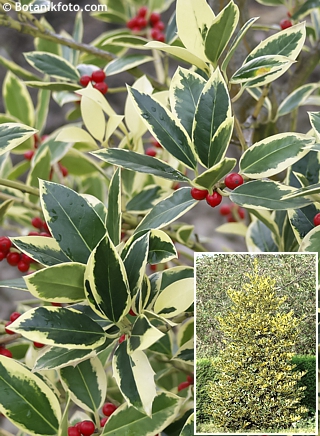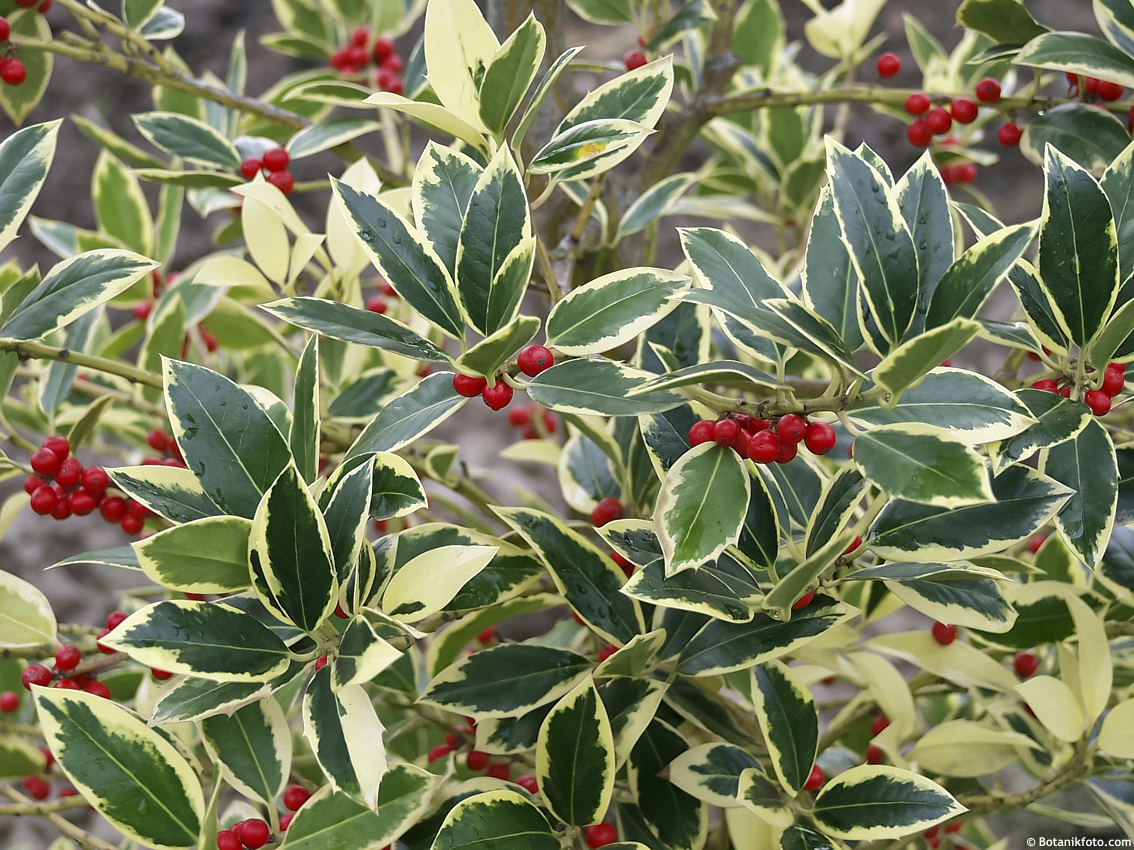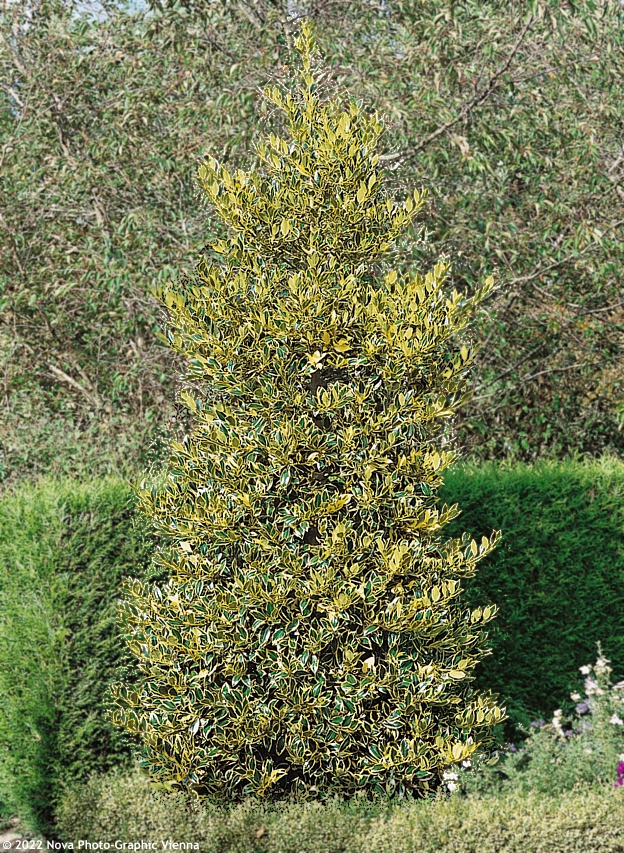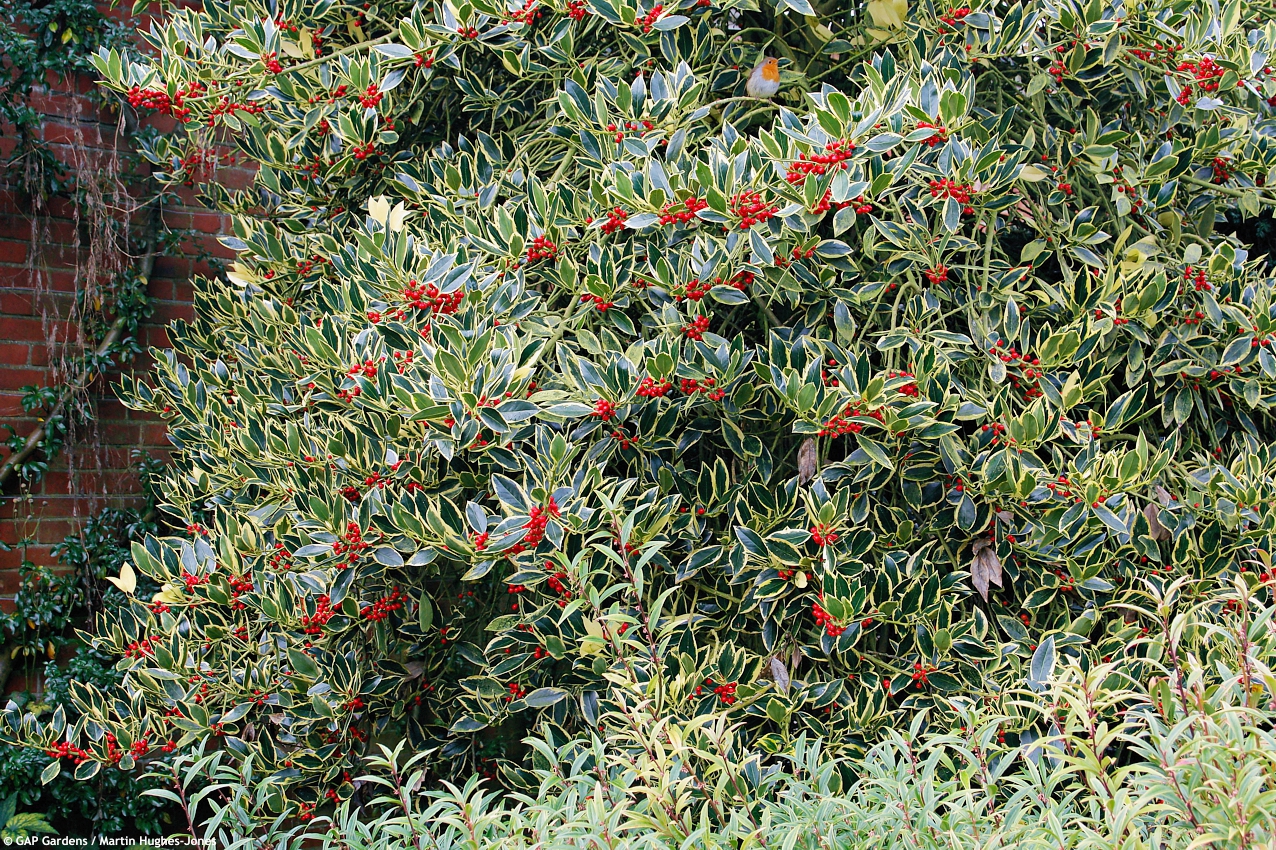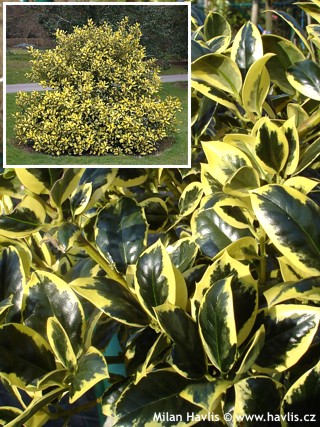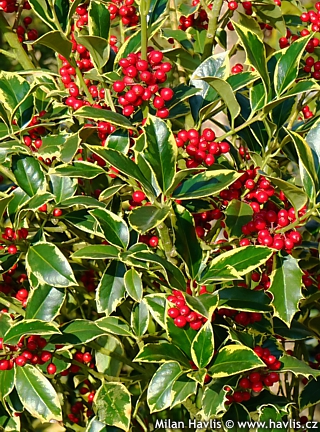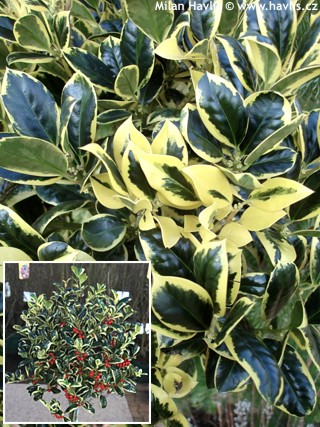Ilex x altaclerensis 'BELGICA AUREA' Highclare holly - spineless - female
Ilex
Hollies belong among the most common evergreen and native plants of temperate parts of Europe with high humidity – British Isles, north France, Benelux countries, and milder parts of north Germany. Various species form trees, shrubs, or thickets. They are absent from natural Central European landscape but can be cultivated there without problems. They are renowned for glossy and typically (but not always) prickly leaves. Multiple variegated forms have been selected for garden cultivation.
Highclere holly is a hybrid between ilex aquifolium and ilex perado, probably from England but without any evidence. All varieties of this hybrid are quite unique and have almost spineless, large leaves, and often exhibit vigorous growth. Its hybrid name altaclerensis is sometimes contested in favour of altaclarensis, given the explanation that Highclere (as in Highclere Castle) cannot be linked to it. In fact, many believe that the hybrid name was chosen in honour of the castle parkland which is a home of a renowned collection of many valuable plants. It is listed Grade I on the Register of Historic Parks and Gardens, and as a Site of Special Scientific Interest.
Belgica Aurea is a variegated version of Highclere holly a sport of Belgica variety, found and introduced by a Dutch nursery Koster & Son in 1908. Originally it was erroneously named ilex perdao aurea. Once Highclere hybrid hollies spread out it was corrected to i. x altaclerensis given a name Silver Sentinel. Only later, after the mother plant from which this sport had arisen was traced and correctly named as Belgica, it was renamed again to Belgica Aurea.
It boasts large, 8-11 cm long, broadly elliptic, evergreen, flat, and partially glossy leaves. They are green in the centre and decorated with a wide, creamy yellow brim. Its intensity decreases in hot months and increases in cold months of the year. As a female variety it bears plenty of vivid red berries if a suitable male pollinator is nearby. We noticed that it is quite picky about its fiancé and not every male holly will secure a good yield. If you find a good one place it ideally in the same garden though bees can carry pollen from the distance of almost 2 km. The berries are not edible nor poisonous but contain saponins which cause severe discomfort if eaten.
Belgica Aurea is somewhat rare both in cultivation as well as in garden centres. It is a beautiful and robust plant allegedly reaching 12 meters tall in England and half the spread. In C.E. climate, however, it grows slowly or moderately to 4-5 meter tall in maturity which may take several decades. Its habit is broadly conical and bushy. It can be pruned and shaped to maintain smaller size. Do not cut into old wood. It takes a considerable amount of time to repair its shape. Pruning in April will encourage new growths, trimming by end July is ideal for shaping.
Grow hollies in moist but well-drained, fertile soil. They can take periods of drought once established but dislike compacted, heavy-clay-based soils that turn very dry in summer, and often too wet in winter. If your soil is such, dig the planting hole only half the depth of the root ball, refine what you dig out and mix well with quality substrate of highly acidic level (low pH value). Using this mixture make a gradual slope from the stem to the original ground level and tamp it down as much as you can. Your root ball should not look like a molehill but more like a wide and flat mound. Mulch it well and keep watering it more often as it will be more prone to drying out as opposed to most common flat-in-the-ground transplanting. If you live in a region with cold winters and long-lasting frost we recommend growing it in position sheltered from drying winds, and preferably shaded from winter sun. Hardy to about -25 °C (USDA zone 6), perhaps a little more. Not suitable for pots and planters.
Last update 02-02-2022

































